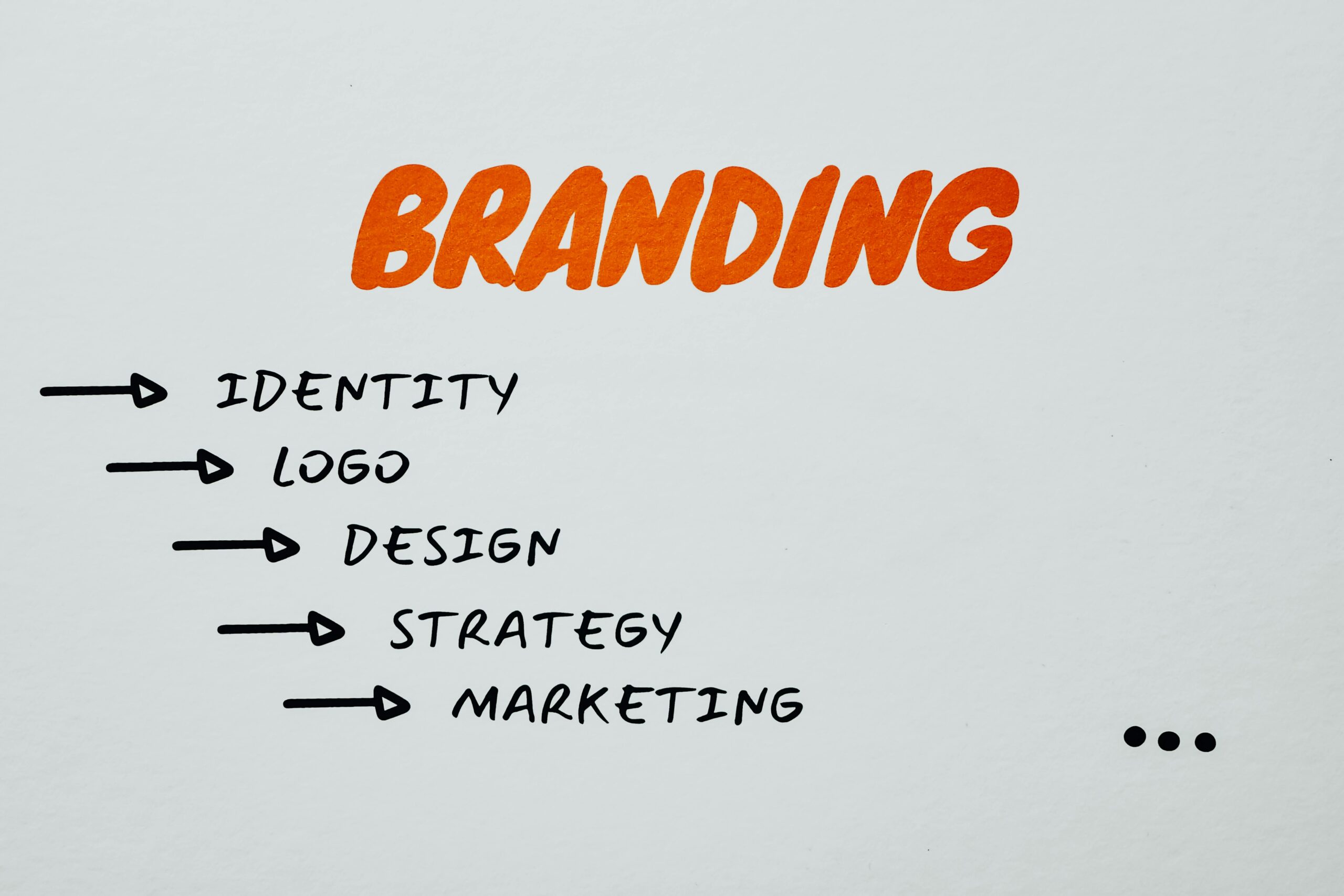Generating high-quality leads is essential for any business looking to grow online. With the right strategies and tools, you can attract potential customers and convert them into loyal clients. The best SEO tools can streamline this process, improving your search engine rankings and making it easier to reach your target audience. In this article, we will explore some of the best SEO tools available that can help you generate high-quality leads. 1. Google Search Console Google Search Console is one of the best SEO tools for tracking website performance. It provides insights into how your site appears in search results, identifies technical issues, and helps optimize content for better visibility. By analyzing search queries and impressions, you can adjust your SEO strategy to attract more leads. 2. Ahrefs Ahrefs is a powerful SEO tool that provides deep insights into backlinks, keyword research, and competitor analysis. With its site audit feature, you can identify technical issues affecting your rankings. Ahrefs also helps uncover keyword opportunities, making it easier to target high-intent users and increase lead generation. 3. SEMrush SEMrush is another popular choice among the best SEO tools. It offers keyword research, backlink analysis, and site auditing features. One of its standout features is the ability to track and analyze competitor strategies. By understanding what works for your competitors, you can refine your own approach and improve your lead generation efforts. 4. Moz Pro Moz Pro is a comprehensive SEO suite that helps businesses enhance their online presence. It offers keyword tracking, link analysis, and on-page optimization tools. Moz’s Domain Authority metric is particularly useful for evaluating website strength. Using Moz Pro can help businesses identify SEO gaps and improve their strategies to attract high-quality leads. 5. Ubersuggest Ubersuggest, developed by Neil Patel, is a user-friendly tool that provides valuable keyword insights. It offers keyword suggestions, search volume analysis, and content ideas. This tool is particularly useful for small businesses and startups looking for cost-effective SEO solutions. With Ubersuggest, you can optimize your content to generate better leads. 6. Screaming Frog SEO Spider Screaming Frog SEO Spider is an essential tool for conducting in-depth technical SEO audits. It crawls your website to identify broken links, duplicate content, and missing meta tags. Fixing these issues can enhance your site’s performance and improve search rankings, ultimately leading to better lead generation. 7. Surfer SEO Surfer SEO is a data-driven optimization tool that helps create SEO-friendly content. It analyzes top-ranking pages and provides recommendations based on factors like keyword density, content structure, and word count. By using Surfer SEO, businesses can create highly optimized content that attracts and retains leads. 8. HubSpot SEO Tools HubSpot provides a range of SEO tools integrated into its marketing platform. It offers features like keyword tracking, content strategy recommendations, and analytics. HubSpot’s all-in-one solution makes it easier to manage SEO efforts while focusing on lead generation and customer engagement. 9. Yoast SEO Yoast SEO is one of the most popular plugins for WordPress websites. It provides real-time content analysis, helping users optimize their pages for search engines. Features like readability checks, meta tag optimization, and internal linking suggestions make it a valuable tool for businesses aiming to generate high-quality leads. 10. BuzzSumo BuzzSumo is a content research tool that helps identify trending topics and popular content in your niche. By analyzing what works best for competitors, you can create compelling content that attracts more traffic. Generating engaging content with BuzzSumo can boost your SEO efforts and improve lead generation. Using the best SEO tools can make a significant difference in your lead generation strategy. From keyword research to technical SEO audits, these tools offer valuable insights that can enhance your online visibility. If you’re looking for expert assistance in generating high-quality leads, WebsiteSeoLeads can help optimize your SEO efforts and connect you with potential customers. By leveraging the right tools and strategies, you can take your business to new heights.
SEO Leads That Drive Real Business Growth
In today’s competitive digital world, businesses need more than just a website to succeed—they need a steady stream of potential customers actively searching for their services. This is where SEO leads that drive real business growth come into play. These leads are crucial for increasing visibility, improving conversion rates, and ultimately boosting revenue. Understanding SEO Leads That Drive Real Business Growth SEO leads refer to potential customers who find your business through organic search engine results. Unlike traditional marketing methods, SEO leads that drive real business growth come from users actively searching for solutions related to your services. This means they have a higher intent to convert, making them more valuable than cold outreach leads. By focusing on SEO, businesses can attract targeted prospects who are genuinely interested in their offerings. This results in increased engagement, improved brand awareness, and long-term customer relationships. Why SEO Leads Are Essential for Business Growth How to Generate SEO Leads That Drive Real Business Growth Partnering with Experts to Maximize SEO Leads For businesses looking to enhance their lead generation efforts, working with experts like WebsiteSeoLeads can make a significant difference. With data-driven strategies, targeted campaigns, and advanced SEO techniques, businesses can maximize their online presence and generate high-quality SEO leads that drive real business growth. Conclusion SEO leads that drive real business growth are essential for companies looking to scale their online presence. By implementing effective SEO strategies, businesses can attract highly targeted leads, improve conversion rates, and increase revenue over time. Investing in SEO is a long-term commitment that delivers sustainable business growth, making it one of the most powerful digital marketing strategies available today. Websiteseoleads
The #1 Source for Exclusive SEO Leads
In the competitive world of digital marketing, finding the right clients can be a challenge. Businesses are constantly searching for ways to improve their online visibility, and SEO is a crucial part of that journey. To stay ahead, agencies and consultants need a reliable source for exclusive SEO leads that connect them with potential clients actively seeking SEO services. Why Exclusive SEO Leads Matter Not all leads are created equal. Generic leads often lack intent and can waste valuable time and resources. A trusted source for exclusive SEO leads ensures that the prospects you engage with are genuinely interested in improving their search rankings. These leads come with a higher conversion rate, making them more valuable for businesses looking to grow. Exclusive SEO leads allow businesses to: By working with a reputable source for exclusive SEO leads, businesses can streamline their sales efforts and close deals more efficiently. How WebsiteSeoLeads Delivers High-Quality Leads A successful SEO strategy begins with finding the right clients. WebsiteSeoLeads specializes in providing a reliable source for exclusive SEO leads tailored to businesses’ needs. Unlike generic lead generation platforms, WebsiteSeoLeads focuses on connecting agencies and consultants with businesses actively looking for SEO solutions. The process involves: By leveraging these methods, WebsiteSeoLeads ensures that clients receive high-value leads with real potential for conversion. Benefits of Using a Dedicated Source for Exclusive SEO Leads Partnering with a trusted source for exclusive SEO leads offers several advantages, including: Having a dedicated source for exclusive SEO leads allows businesses to spend more time on strategy and execution rather than chasing unqualified prospects. How to Make the Most of Your SEO Leads Once you secure high-quality leads, maximizing their potential is essential. Here are some strategies to convert them into loyal clients: A reliable source for exclusive SEO leads provides the foundation for business growth, but success ultimately depends on how well you nurture and convert these leads. Conclusion Finding the right clients in the crowded digital marketing space can be difficult, but a trusted source for exclusive SEO leads makes the process more efficient. By working with a dedicated lead provider, businesses can secure high-intent prospects, reduce wasted effort, and improve conversion rates. Investing in exclusive SEO leads is a smart strategy for agencies looking to grow their client base and increase revenue. Websiteseoleads
The Role of A/B Testing in Optimizing Marketing Campaigns
A/B testing is a powerful technique that helps businesses make data-driven decisions to improve their marketing efforts. By testing different variations of a campaign, businesses can determine what resonates best with their audience, leading to higher engagement, conversions, and overall success. Optimizing marketing campaigns through A/B testing allows brands to refine their messaging, design, and strategies based on real user behavior rather than assumptions. What is A/B Testing? A/B testing, also known as split testing, involves comparing two versions of a marketing asset to determine which one performs better. This could be an email, landing page, advertisement, or call-to-action (CTA). By showing version A to one group and version B to another, marketers can analyze which version generates better results in terms of engagement, click-through rates, or conversions. For businesses looking to enhance their digital marketing strategies, optimizing marketing campaigns with A/B testing provides valuable insights into what works best for their target audience. Why A/B Testing is Essential for Marketing Success A/B testing is a crucial part of optimizing marketing campaigns because it removes guesswork and provides measurable data. Here are some of the key benefits: Key Elements to Test in A/B Testing To successfully optimize marketing campaigns, businesses should test various elements, including: By continuously testing and refining these elements, businesses can focus on optimizing marketing campaigns for better performance. Steps to Conduct a Successful A/B Test To ensure effective results, businesses should follow a structured approach when conducting A/B tests. Optimizing marketing campaigns through A/B testing is an ongoing process. Even after a winning variation is identified, continuous testing ensures that businesses stay ahead of changing consumer preferences. Common A/B Testing Mistakes to Avoid While A/B testing is highly effective, certain mistakes can lead to misleading results. Businesses should avoid: By avoiding these common pitfalls, businesses can ensure that their A/B testing efforts contribute to optimizing marketing campaigns effectively. Conclusion A/B testing is a powerful method for optimizing marketing campaigns and driving better results. By testing different elements of a campaign, businesses can make data-driven decisions that enhance engagement, conversions, and user experience. Implementing A/B testing as part of a marketing strategy allows brands to stay competitive and continuously improve their campaigns. For businesses looking to improve their digital marketing performance, WebsiteSeoLeads offers expert insights and solutions to help implement effective A/B testing strategies. By leveraging data and experimentation, brands can optimize their marketing efforts for sustained growth and success.
Psychological Triggers That Boost Online Sales
Understanding consumer behavior is essential for driving sales in the digital marketplace. People don’t always make purchasing decisions based purely on logic; emotions and psychological triggers play a crucial role. By using psychological triggers that boost online sales, businesses can create more persuasive marketing strategies, improve conversions, and build stronger relationships with their customers. The Power of Social Proof One of the most effective psychological triggers that boost online sales is social proof. Consumers tend to trust the opinions and experiences of others when making purchasing decisions. Businesses can leverage social proof by: When potential customers see that others have had a positive experience with a product or service, they are more likely to trust the brand and make a purchase. Creating a Sense of Urgency A strong motivator in online sales is urgency. When consumers believe they have limited time to act, they are more likely to make a quick decision. Brands can use urgency to increase conversions by: These tactics push customers to take action immediately, reducing hesitation and increasing sales. The Scarcity Effect Scarcity is another psychological trigger that boosts online sales by making products appear more desirable. When items are perceived as rare or exclusive, consumers feel a greater urge to buy. Businesses can use scarcity to their advantage by: By emphasizing scarcity, brands can create a fear of missing out (FOMO), encouraging customers to complete their purchases sooner rather than later. The Reciprocity Principle The principle of reciprocity suggests that people feel compelled to return favors when they receive something valuable. Businesses can use this concept to boost sales by offering something for free before asking for a purchase. Strategies include: When customers receive something beneficial without an immediate expectation of payment, they are more likely to make a purchase in return. Emotional Storytelling Emotions drive purchasing decisions, and storytelling is a powerful way to connect with customers on a deeper level. Brands that use compelling narratives can influence emotions and create lasting connections. Effective storytelling can be incorporated into marketing by: By making customers feel emotionally connected, brands can enhance their perceived value and encourage long-term loyalty. The Authority Effect Consumers are more likely to trust and purchase from brands that establish themselves as experts in their field. Demonstrating authority in a niche can be achieved through: When customers perceive a brand as an authority, they feel more confident in their purchase decisions, leading to higher conversion rates. The Anchoring Effect The anchoring effect occurs when people rely on the first piece of information they receive to make decisions. Businesses can use this to their advantage by: By setting an initial reference point, businesses can guide customers toward making more favorable purchasing decisions. Conclusion Psychological triggers that boost online sales are essential for increasing conversions and driving revenue. By leveraging social proof, urgency, scarcity, reciprocity, storytelling, authority, and anchoring, businesses can create persuasive marketing strategies that influence consumer behavior. For brands looking to optimize their digital marketing strategies, WebsiteSeoLeads provides expert insights and tailored solutions to enhance online sales performance. Implementing these psychological triggers can help businesses build stronger customer relationships, drive more conversions, and achieve long-term success.
How to Create Viral Content That Drives Engagement
Creating content that goes viral is every marketer’s dream. Viral content has the power to reach millions, increase brand awareness, and drive massive engagement. But what makes content go viral? It’s not just luck—there’s a science behind it. Understanding how to create viral content can help businesses craft compelling posts, videos, and articles that resonate with their audience and encourage shares. Understanding Virality in Content Marketing Not all content gets shared equally. Some posts fade quickly, while others spread like wildfire. How to create viral content starts with understanding why people share. Most viral content taps into emotions, provides value, and encourages interaction. Successful viral content often includes: Creating Share-Worthy Content If you want to know how to create viral content, the first step is to make it shareable. The more people who share your content, the more exposure it gains. Here are some key strategies: 1. Focus on Trending Topics Content that aligns with current trends and conversations has a higher chance of going viral. Stay updated on: By incorporating trending topics into your content, you increase its potential reach. 2. Use a Strong Hook A compelling headline or opening sentence can make all the difference. A great hook: For example, instead of a generic title like “Tips for Social Media,” use something more engaging like “5 Social Media Hacks That Skyrocketed My Engagement in 30 Days.” 3. Leverage Emotions People share content that evokes emotions. The strongest viral emotions include: The key to how to create viral content is to tap into emotions that drive engagement. 4. Optimize for Social Sharing If content isn’t easy to share, it won’t go viral. To maximize shareability: When content is effortless to share, people are more likely to pass it along. The Role of Visuals in Viral Content Studies show that visual content receives significantly more shares than text-only content. To enhance virality: If you’re wondering how to create viral content, investing in high-quality visuals is a crucial step. Timing and Platform Selection The timing and platform of your content play a major role in virality. For maximum impact: The right timing increases the likelihood of content spreading quickly. Encouraging Audience Interaction Content that encourages engagement is more likely to go viral. To boost interaction: By fostering conversation, you increase the chances of your content reaching a wider audience. Analyzing and Optimizing Viral Success Once your content is published, track its performance. Use analytics to determine: Use this data to refine your strategy and improve future content. How to create viral content isn’t just about making one successful post—it’s about continually learning and adapting. Conclusion Viral content doesn’t happen by accident. By understanding how to create viral content, businesses can craft engaging, share-worthy posts that capture attention and drive engagement. Whether through emotional appeal, strong visuals, or audience interaction, the right strategy can turn an ordinary post into a viral sensation. For expert guidance on content creation and digital marketing, WebsiteSeoLeads provides valuable insights to help brands maximize their online presence and reach a wider audience.
How High-Quality Content Drives Business Growth
In today’s digital world, businesses must stand out to attract and retain customers. One of the most effective ways to achieve this is by creating valuable and engaging content. High-quality content drives business growth by building brand credibility, increasing customer engagement, and improving search engine rankings. When businesses consistently produce meaningful content, they establish themselves as industry leaders and attract a loyal customer base. Establishing Authority and Trust Consumers are more likely to engage with businesses that demonstrate expertise in their industry. Providing informative and well-researched content helps build credibility and establishes a brand as a trusted source of information. Ways to use high-quality content to build authority include: When businesses consistently offer valuable content, they earn the trust of their audience, leading to stronger customer relationships and long-term business growth. Improving Search Engine Rankings A strong content strategy plays a crucial role in search engine optimization (SEO). High-quality content drives business growth by improving website rankings, increasing organic traffic, and making it easier for potential customers to discover a brand. To enhance SEO performance, businesses should: When search engines recognize a website as a valuable resource, they rank it higher, making it more visible to potential customers. Engaging and Retaining Customers High-quality content is essential for keeping customers engaged. Engaged customers are more likely to interact with a brand, make repeat purchases, and recommend the business to others. To create engaging content, businesses should: When businesses prioritize customer engagement, they build stronger relationships that lead to increased loyalty and long-term success. Supporting Lead Generation and Conversions A well-planned content strategy does more than attract visitors—it also helps convert them into paying customers. High-quality content drives business growth by guiding potential customers through the sales funnel. Effective content for lead generation includes: By offering valuable content, businesses can nurture leads and encourage them to take action, resulting in increased sales and revenue. Enhancing Social Media Presence Content plays a vital role in social media marketing. When businesses share high-quality content on social platforms, they expand their reach and attract a wider audience. To maximize social media impact, businesses should: An active and engaging social media presence strengthens brand awareness and helps businesses connect with potential customers. Strengthening Brand Identity A consistent content strategy reinforces a brand’s identity and values. High-quality content reflects a company’s mission, vision, and personality, making it easier for customers to connect with the brand. To build a strong brand identity through content, businesses should: A well-defined brand identity attracts the right audience and encourages long-term customer loyalty. Conclusion High-quality content drives business growth by increasing brand credibility, improving SEO rankings, engaging customers, and supporting lead generation. Businesses that invest in valuable content create stronger relationships with their audience, leading to long-term success. By focusing on creating informative, engaging, and well-optimized content, companies can position themselves as industry leaders and achieve sustainable growth. Whether through blog posts, videos, or social media updates, a strong content strategy is essential for driving business success. For businesses looking to enhance their digital marketing efforts, WebsiteSeoLeads provides expert guidance in content creation and optimization, helping brands maximize their impact and reach a wider audience.
The Power of Storytelling in Marketing Success
Storytelling has been an essential part of human communication for centuries. In marketing, it is a powerful tool that allows brands to connect with their audience on a deeper level. The power of storytelling in marketing success lies in its ability to evoke emotions, build trust, and create memorable experiences that drive customer engagement and loyalty. This blog explores how businesses can leverage the power of storytelling in marketing success to strengthen their brand and achieve long-term growth. Why Storytelling Matters in Marketing Consumers are constantly bombarded with advertisements and promotional messages. Traditional marketing tactics often fail to capture their attention, but storytelling provides a way to cut through the noise. Stories make brands more relatable and memorable, helping customers form a personal connection with the business. The power of storytelling in marketing success comes from: When brands use storytelling effectively, they build trust and credibility, making their marketing efforts more impactful. Elements of a Strong Brand Story A well-crafted brand story should be authentic, engaging, and aligned with the company’s values. To harness the power of storytelling in marketing success, businesses should focus on key elements that make a story compelling. Essential components of an effective brand story include: By incorporating these elements, businesses can create compelling narratives that strengthen their brand identity. How Storytelling Enhances Customer Engagement The power of storytelling in marketing success is most evident in how it enhances customer engagement. Stories capture attention and make messages more memorable. Customers are more likely to engage with brands that tell meaningful and authentic stories rather than those that rely solely on sales-driven content. Ways storytelling improves engagement include: Using storytelling strategically helps brands foster deeper relationships with their audience, ultimately leading to higher engagement and conversion rates. Examples of Storytelling in Marketing Many successful brands use storytelling to connect with their audience and differentiate themselves from competitors. Some of the most impactful storytelling strategies include: By studying how leading brands implement storytelling, businesses can develop their own unique approach to crafting compelling narratives. How to Incorporate Storytelling in Your Marketing Strategy To harness the power of storytelling in marketing success, brands should integrate storytelling into every aspect of their marketing strategy. Steps to effectively incorporate storytelling: By following these steps, brands can leverage storytelling to build meaningful connections with their customers. Conclusion The power of storytelling in marketing success lies in its ability to engage, inspire, and connect with audiences on an emotional level. By crafting authentic and compelling stories, brands can build trust, enhance customer engagement, and drive long-term success. Incorporating storytelling into your marketing strategy is essential for standing out in a crowded marketplace. Whether through customer testimonials, behind-the-scenes content, or emotional campaigns, storytelling helps brands create lasting impressions that lead to increased brand loyalty and customer retention. For expert guidance on implementing storytelling in your marketing strategy, WebsiteSeoLeads can help businesses craft compelling narratives that drive engagement and growth.
The Key to Gaining Customer Trust and Brand Loyalty
In today’s competitive business landscape, customer trust is the foundation of a successful brand. Without trust, it is difficult to build lasting relationships with customers or achieve long-term growth. When a brand consistently delivers on its promises, customers develop loyalty and are more likely to recommend the business to others. This blog explores the key to gaining customer trust and how to create strong brand loyalty that keeps customers coming back. Understand Why Customer Trust Matters Trust is one of the most valuable assets a brand can have. Customers who trust a brand are more likely to: The key to gaining customer trust is creating consistent, positive experiences that meet customer expectations. When businesses prioritize trust, they build strong relationships that drive long-term success. Be Transparent and Honest Transparency is a critical component of trust. Customers appreciate brands that communicate openly and honestly about their products, policies, and values. Ways to build transparency include: By being upfront with customers, brands can create a trustworthy reputation that strengthens loyalty. Deliver Consistent Quality and Service Customers return to brands they can rely on. Whether it’s a product, service, or customer support, consistency is the key to gaining customer trust. To ensure quality and reliability: When customers know they can depend on your brand, they feel more confident in their decision to remain loyal. Build Strong Customer Relationships Loyalty is built on relationships, and brands that genuinely connect with their customers see greater long-term success. To build meaningful relationships: Strong relationships create emotional connections that encourage customers to stay loyal to your brand. Prioritize Excellent Customer Service A single negative customer experience can damage trust and push customers toward competitors. Providing exceptional customer service is essential for building loyalty. Best practices for great customer service include: When customers feel valued and supported, they are more likely to trust your brand and continue doing business with you. Create a Strong and Authentic Brand Identity Customers connect with brands that have a clear and authentic identity. Your brand’s message, values, and visuals should all align to create a cohesive experience. To build an authentic brand identity: An authentic brand identity helps customers feel more connected to your business, reinforcing their trust and loyalty. Use Social Proof to Strengthen Credibility Social proof plays a crucial role in the key to gaining customer trust. Customers trust the opinions of others, making online reviews, testimonials, and case studies valuable tools for building credibility. Ways to leverage social proof: When potential customers see that others trust your brand, they are more likely to follow suit. Maintain a Strong Online Presence A well-maintained online presence helps build trust by keeping customers informed and engaged. Brands that regularly interact with their audience through digital channels create stronger relationships. To enhance your online presence: WebsiteSeoLeads can help businesses develop a strong online presence and create digital marketing strategies that enhance customer trust and brand loyalty. Conclusion The key to gaining customer trust is a combination of transparency, consistency, strong relationships, and excellent customer service. When brands prioritize trust, they create loyal customers who return for repeat business and become advocates for the brand. By focusing on delivering quality experiences, engaging with customers, and maintaining authenticity, businesses can establish a reputation that fosters long-term loyalty. Investing in trust today will lead to lasting success in the future. Websiteseoleads
How to Create a Customer-Centric Brand That Builds Trust
In today’s competitive market, brands that prioritize their customers stand out from the rest. A customer-centric brand focuses on delivering value, building meaningful relationships, and earning customer trust. When businesses put customers first, they create loyal advocates who return time and time again. This blog will explore how to create a customer-centric brand that builds trust and long-term success. Understand the Importance of a Customer-Centric Approach A successful brand is not just about selling products or services—it’s about meeting customer needs and solving their problems. When you create a customer-centric brand, you focus on delivering the best possible experience at every touchpoint. The benefits of a customer-centric brand include: By prioritizing your customers, you establish trust and make your brand the go-to choice in your industry. Know Your Audience Inside and Out Understanding your customers is the foundation of how to create a customer-centric brand. You need to know their pain points, preferences, and expectations to tailor your offerings and messaging. To better understand your audience: When you know what your customers want, you can create personalized experiences that keep them engaged. Deliver Exceptional Customer Service Customer service is a key component of building trust. Customers want to feel valued and supported whenever they interact with your brand. A strong customer support system ensures their needs are met quickly and efficiently. Best practices for excellent customer service: By making customer support a priority, you reinforce your brand’s commitment to customer satisfaction. Build Trust Through Transparency and Authenticity Trust is the foundation of a strong customer-brand relationship. Customers appreciate honesty and transparency in how businesses operate. To create a customer-centric brand, ensure your brand values and messaging align with your actions. Ways to build trust: Authenticity strengthens your credibility, making customers more likely to choose your brand over competitors. Personalize the Customer Experience A one-size-fits-all approach no longer works in today’s digital landscape. Customers expect brands to tailor experiences based on their preferences and behaviors. To personalize interactions: A personalized experience shows customers that your brand values their individual needs. Engage with Customers Across Multiple Platforms A customer-centric brand stays connected with its audience through various channels. Engaging with customers on social media, email, and other platforms helps maintain strong relationships. Effective engagement strategies: Consistent engagement builds a sense of community and trust among your customers. Align Your Brand Values with Customer Expectations Customers are more likely to support brands that align with their values. Whether it’s sustainability, social responsibility, or innovation, make sure your brand stands for something meaningful. Ways to showcase brand values: When customers see that your brand shares their beliefs, they will feel a stronger emotional connection. Leverage Digital Marketing to Strengthen Customer Relationships A strong online presence is essential when learning how to create a customer-centric brand. Digital marketing allows brands to communicate their message effectively and provide ongoing value to customers. Successful digital marketing strategies include: WebsiteSeoLeads can help businesses develop digital marketing strategies that strengthen brand trust and customer engagement. Conclusion To create a customer-centric brand, businesses must prioritize customer needs, deliver exceptional service, and build meaningful relationships. By understanding your audience, providing transparency, and engaging through personalized experiences, you establish a strong foundation of trust. A brand that truly values its customers will not only retain them but also turn them into loyal advocates. Start implementing customer-centric strategies today to build a brand that customers trust and return to time and time again.










